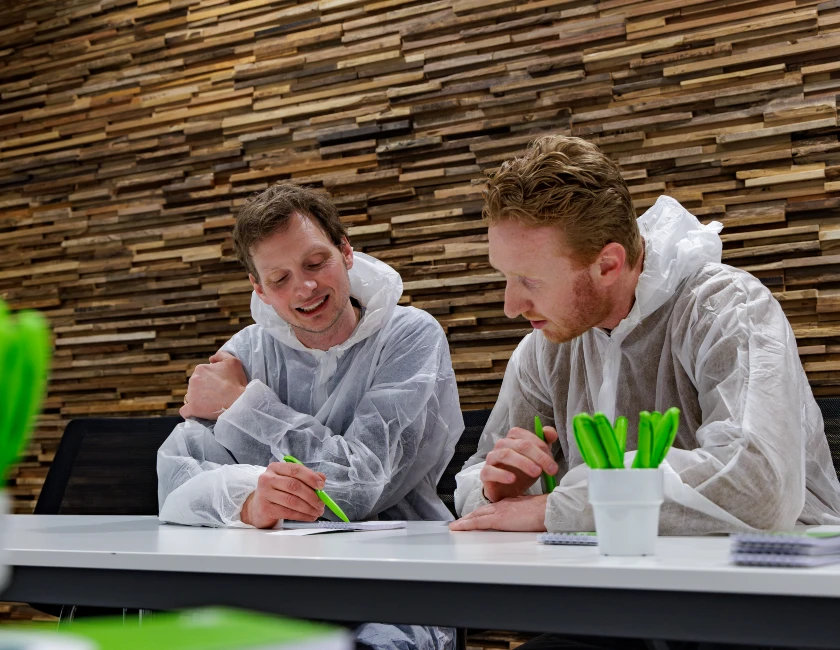The Netherlands
March 18, 2024
Hygiene was a key topic at the Plant Raiser Summit last autumn. “ToBRFV has renewed the focus on this topic,” said Jan Willem Keijzer from Royal Brinkman. His colleague Jasper Verhoeven and other specialists help companies to set up a hygiene protocol. Their advice: “Take a structured approach to hygiene. That way, you invest your time and money in the right priorities.”
Jan Willem participated in the panel discussion at the summit. He noted that hygiene is a hot topic. “However, there are big differences between companies. Some plant raisers are already taking a very professional approach, while others are just beginning.”
First step: risk analysis
The first step towards a hygiene protocol is always to analyse the risk of problems. These could be viruses like ToBRFV, Clavibacter or Cucumber green mottle mosaic virus (CGMMV), fungi like Fusarium, or soil nematodes. “It’s easy to create an Excel graph of the risks, with the impact of the problems along the X-axis and their frequency on the Y-axis. Your focus should be on the problems with both high impact and high probability.”

Preventing or limiting infection
The next step is to take appropriate hygiene measures. Those measures have two goals: firstly, to prevent infection from occurring, and secondly to ensure that if infection does occur, it is limited to as small an area as possible (e.g. one row, one compartment or one greenhouse). “With a protocol in place, the right actions are immediately initiated if infection occurs. Thanks to this, our customers know that they are investing their time and money in the right priorities,” said Jan Willem.
Four types of hygiene measures
There are four types of hygiene measures: people-related procedures (e.g. door policy), materials-related procedures, water quality, and crop rotation.
Jan Willem: “The measures have to suit the problem. If soil nematodes are your main problem, a strict door policy is not going to solve that. But strict access controls are important when it comes to viruses. The same goes for a structured way of working. You can restrict the spread of infection if you always work in the same direction and change gloves after each row. That’s how you keep control.”

Valuable in communications with growers
A good hygiene protocol not only helps reduce risks, but is also valuable in communications to employees and customers. Jasper: “It shows that you take hygiene seriously. If a problem arises, you can depend on your protocol and show that you have things well organised.”
Hygiene is also a long-term issue, added Jasper: “The hygiene protocol needs maintenance. You have to stay alert, even when the virus pressure is lower.”
A component of ICM
Jasper and Jan Willem emphasised that a hygiene protocol is not a stand-alone element, but rather one component of Integrated Crop Management (ICM). “It is an important building block for growing healthy plants. Resistant varieties also contribute to that, for example. But even if resistant varieties are available, hygiene remains important to keep the virus pressure as low as possible and ensure that resistances have maximum effect. Moreover, it reduces the chance that viruses will overcome the resistances.”
Advice around the world
Jan Willem explained that Royal Brinkman is available to help any companies wanting to get started with hygiene protocols: “We advise companies worldwide. This can often be done remotely, but also on site if necessary. We always start with a risk analysis. We go through the components step by step, with a focus on the problem. That’s how we did it at Rijk Zwaan’s Trial Center High Tech, which became operational last year.”
Need advice?
Are you interested in discussing the possibilities for your company? Contact Jasper Verhoeven, Hygiene Specialist (jasper.verhoeven@royalbrinkman.com), or Jan Willem Keijzer, Product Manager Hygiene (jan-willem.keijzer@royalbrinkman.com).